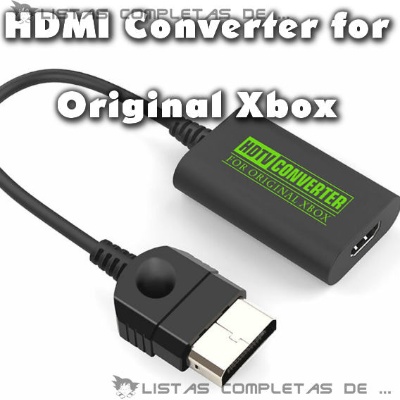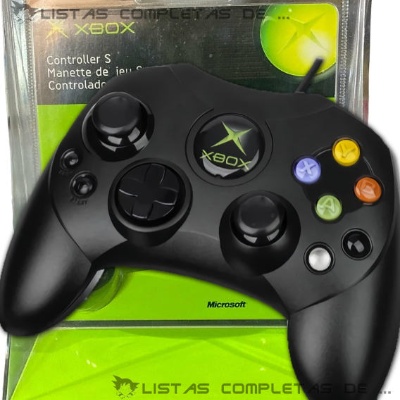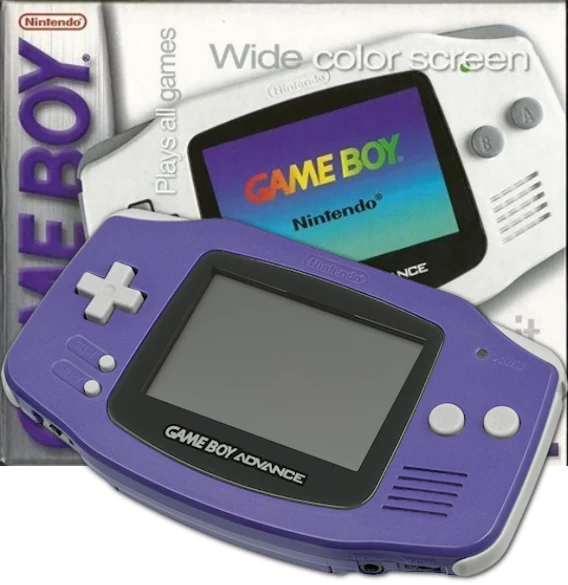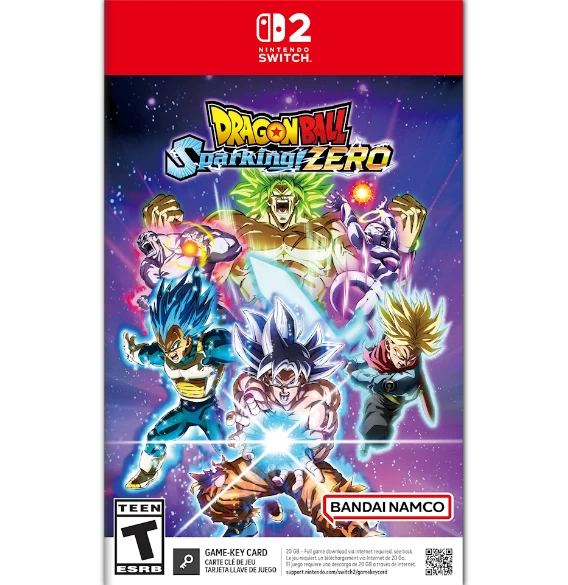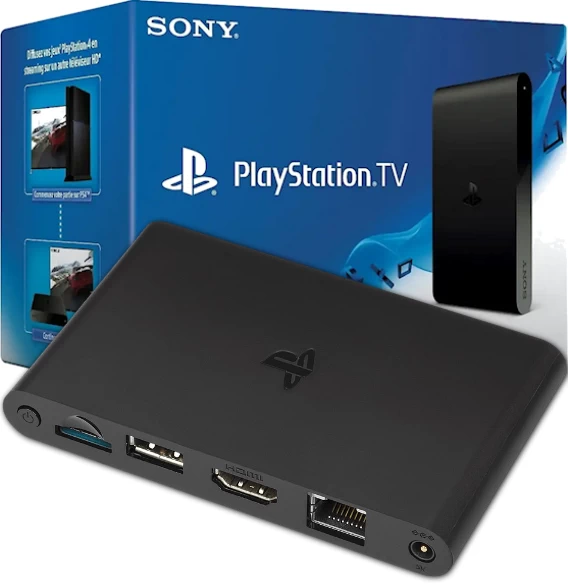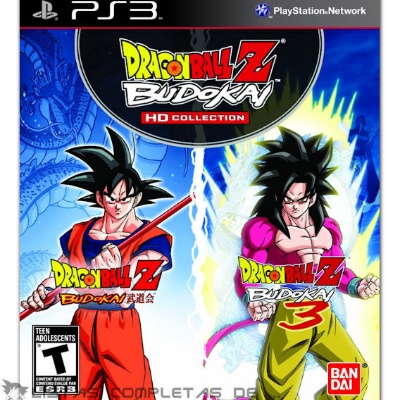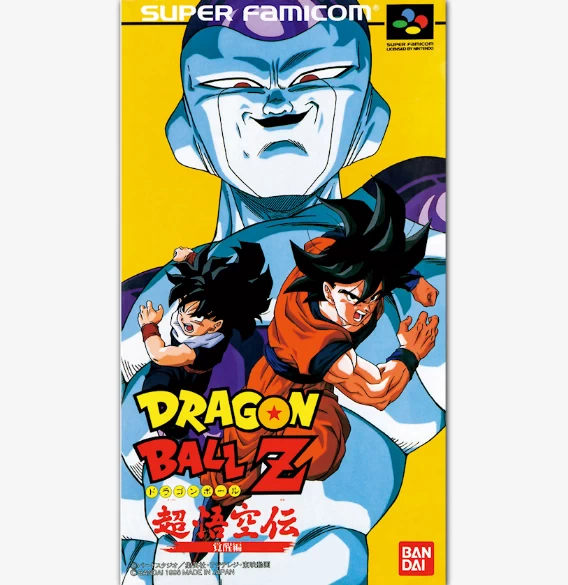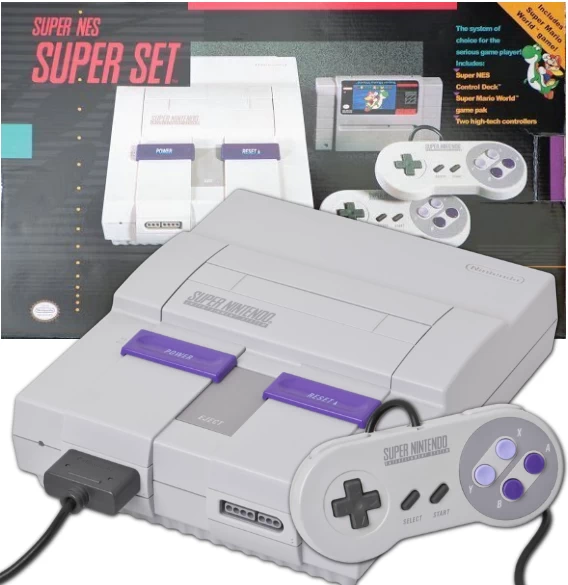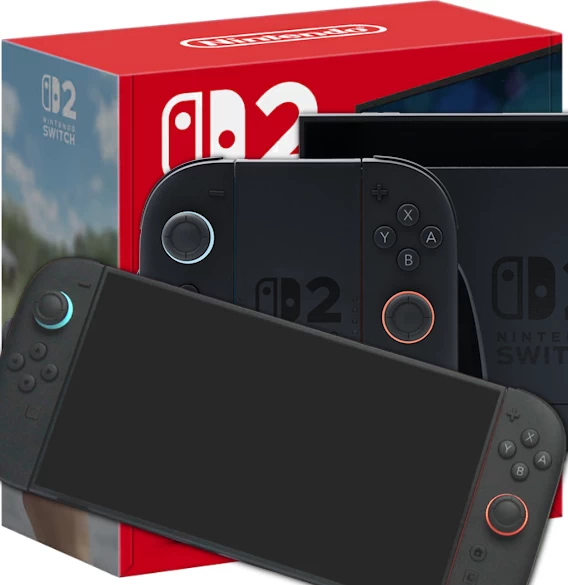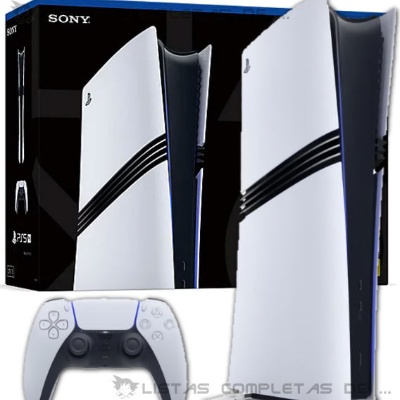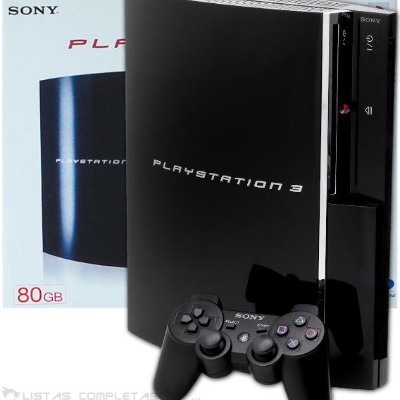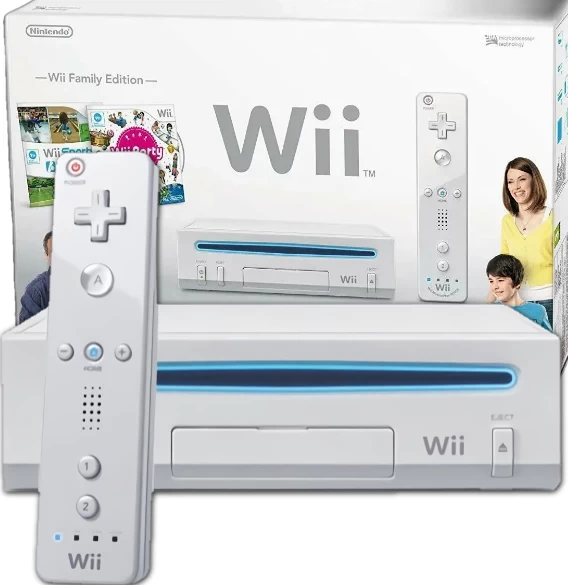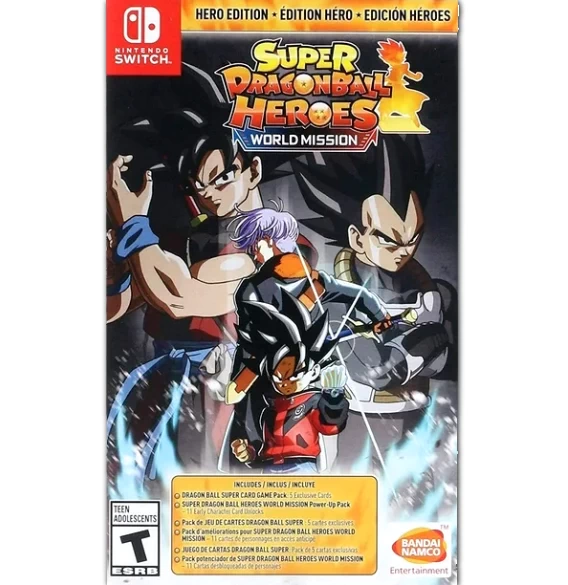All Dragon Ball video games for the original Xbox
The first Microsoft console, the Xbox, and the only Dragon Ball game for it
DBZ: Sagas is the only Dragon Ball game released for the original Xbox; also discover all the consoles released and some accessories.
In 2001, Microsoft released its first console, the Xbox, entering the video game market to compete with other sixth-generation consoles, such as the PS2, GameCube, and Dreamcast.
On this page, you can discover the complete list of Dragon Ball games released for this console, as well as all its versions and accessories.
Dragon Ball games released for the original Xbox
Sadly, few Dragon Ball games made it to the original Xbox; so few that we only had DBZ: Sagas in 2005. An RPG adventure game with battles in a 3D environment.
The different versions and models of the original Xbox console
The original Xbox was released in 2001 and, unlike other consoles, had only a single model, with no “Slim” versions or hardware revisions during its lifecycle.
What truly set it apart was its powerful hardware, capable of bringing the gaming experience closer to what had previously only been seen on PCs, and its online support through Xbox Live, which enabled easy and stable online matches—a revolutionary feature at the time.
Xbox accessories and peripherals to play Dragon Ball
You may already have at home a console from when you were younger, or you may have inherited it from a friend or family member, or perhaps you bought it second-hand, but… you’re still missing some accessory or peripheral to be able to play with it, like an adapter or a controller…
So here’s a list of the things you might need to play your almost retro console.
More complete lists of Dragon Ball games and video games.
We also have more complete lists of Dragon Ball games and video games cataloged by their gaming platform, including Board Games, PlayStation, Nintendo NES, etc.
Here are some of the Dragon Ball games and video games we have for you:
Discover some of the Dragon Ball games, video games, consoles, and collectible accessories. From the iconic NES and GameBoy to the latest PC, PS5, and X-BOX titles, as well as the timeless board games.
Game Boy Advance
Game Boy Advance
The Game Boy Advance provides a more powerful handheld gaming experience with advanced graphics and a larger screen. Backward compatible with Game Boy and Game Boy Color games, it's the ideal console for those seeking performance and fun.
Dragon Ball: Sparking! ZERO (Game-Key Card)
Dragon Ball: Sparking! ZERO (Game-Key Card)
Dragon Ball: Sparking! Zero (Game-Key Card) contains exactly the same as the physical cartridge version sold for Switch 1, but this is a digital version with a box and a card with a key to acquire the game on our console.
This edition only differs from the cartridge version in the branded logo, which here is exclusively decorated for Switch 2, and it includes a key instead of a cartridge (remember that the cartridge on Switch 2 requires a graphical upgrade update, but not on Switch 1).
Game-Key Cards can only be inserted into the Switch 2 to activate the digital game. But remember the game is backward compatible, and if we have it on our Nintendo account, we will have it on both consoles.
PlayStation TV (PSVita TV)
PlayStation TV (PSVita TV)
The PS Vita TV or PlayStation TV is the latest version released of this console, characterized by having no screen, sound, or controls. It is essentially a mini-console with PS Vita technology, which we had to connect to the PC and use our DualShock 3 or 4 controllers to play on our TV. It is portable because it takes up no more space than a modern external hard drive.
Dragon Ball Z: Budokai HD Collection
Dragon Ball Z: Budokai HD Collection
Dragon Ball Z: Budokai HD Collection is the fifth DBZ game released for the PS3, launched at the end of 2011, and was also released for Xbox 360.
This 3D fighting game is a remaster of Budokai 1 and Budokai 3 from the PS2, but with improved graphics and small extras such as music tracks or region-exclusive costumes, now available worldwide.
Essentially, it combines both games into a single package, with enhanced graphical resolution adapted for this generation of consoles.
Dragon Ball Z: Super Gokūden 2 - Kakusei-Hen
Dragon Ball Z: Super Gokūden 2 - Kakusei-Hen
Dragon Ball Z: Super Gokūden 2 - Kakusei-Hen is the seventh Dragon Ball Z game released for the Super Nintendo and Super Famicom, although it never had official versions in Europe or America, so it only came out for the SFC. It is also the second RPG adventure game released for this console in 1996.
This is the direct sequel to DBZ: Super Gokūden 1, whose story mode covers all of Dragon Ball with kid Goku, and this one starts right at the beginning of DBZ, with Raditz’s arrival and ends with Frieza’s defeat.
Its gameplay is the same as the previous one: it is narrative-focused with action or event moments, where players must make decisions or press buttons to fight, since battles are semi-automatic, requiring timed inputs. It feels like watching Dragon Ball Z interactively, similar to a graphic adventure.
Players will control Goku, kid Gohan, Piccolo, and other characters depending on the story arc being played.
Super Nintendo (SNES - NTSC)
Super Nintendo (SNES - NTSC)
The SNES (USA) or Super Nintendo was the second home console with interchangeable cartridges released by Nintendo for the American market, replacing the Nintendo NES and surpassing it in every aspect.
This console has two sister versions: one Japanese and one European. In Europe, it was also called Super Nintendo or SNES, as in both regions it replaced the NES, the equivalent of the Japanese Famicom. However, while the Japanese and European versions shared the cartridge system and design (only the printed name and the electrical system changed), the U.S. version had a different design and cartridge system.
Regarding cartridge compatibility between regions, this console has a lockout chip and the physical limitation of the cartridges, since Japanese and European cartridges are smaller and only have 60 pins instead of 72 like the American cartridges. Therefore, to play an EU or JPN game, we need an adapter (which also bypasses the lockout chip), but no Dragon Ball games were officially released in the U.S.
Nintendo Switch 2
Nintendo Switch 2
The Nintendo Switch 2 is the console intended to replace the Switch 1, and it was released in summer 2025.
With a 7.9-inch display at 1080p and 120Hz, it greatly improves in size and quality compared to its predecessor. Its processor, sound, storage, and connectivity are improved in every aspect. Additionally, this console includes voice chat functionality and an extra USB-C port on top for accessories like the official camera.
The console is backward compatible with almost all Switch 1 games, allowing us to play all its Dragon Ball games.
Another novelty is the Joy-Con 2, which are new, larger controllers that connect magnetically and feature a "C" button for quick access to GameChat.
Also, the Joy-Cons, Pro Controller, and Hori Split Pad Pro from the Switch are compatible with the 2, but only wirelessly, as their physical connection slots differ.
PlayStation 5 - Pro
PlayStation 5 - Pro
The PS5 Pro is the most powerful version of the console to date. It offers enhanced graphics, improved performance, and support for higher resolutions in some games.
It maintains full compatibility with all PS5 games and DLCs, and continues to use physical or digital discs depending on the model.
It is ideal for those seeking the best possible experience, with fast loading times and optimized performance for all titles, including Dragon Ball games.
PlayStation 3 (Fat)
PlayStation 3 (Fat)
The PlayStation 3 was Sony’s third console, and here we have its final FAT model versions, released starting in 2007.
These versions were no longer backward compatible with PS2 in order to reduce costs, but they fixed other issues, such as overheating.
new Nintendo 3DS XL
new Nintendo 3DS XL
The New Nintendo 3DS XL features larger screens, more stable 3D, and improved performance. Perfect for enjoying exclusive and classic games with greater comfort and an immersive experience.
Wii Family Edition | RVL-101
Wii Family Edition | RVL-101
The Wii Family Edition or RVL-101 was a redesign released 5 years after the original Wii, notable because this model is meant to be used exclusively in a horizontal position (the original one can be placed both vertically and horizontally).
In addition to the position change, we can notice that the console’s logo is now oriented to be read horizontally.
The most detrimental change compared to the original is that it is no longer backward compatible with GameCube games and peripherals.
Otherwise, it remains the same as the original console, with some improvements and bug fixes, but with fewer features.
This edition was only sold in Western markets and was never released in Japan.
The console has region locks, and games from different regions are not compatible. There are methods using discs to bypass this lock, or console modifications that allow you to play your games for collecting purposes. This information is for informational purposes only, not for piracy.
Super Dragon Ball Heroes: World Mission - Hero Edition
Super Dragon Ball Heroes: World Mission - Hero Edition
Super Dragon Ball Heroes: World Mission – Hero Edition was released exclusively in the West and for a limited time. This edition includes the base game, the Power-Up Pack, and five physical cards.
The Power-Up Pack is the first and only Season Pass released for the Super Dragon Ball Heroes: World Mission card game on PC.
This Season Pass gave immediate access —with no unlocking required— to 11 cards to start the game with a strong deck. The unlocked cards were:
Jiren, Hit, Raditz, Xeno Goku, SSGSS Vegeta (2 variants), Ultra Instinct Goku, Goku Blue, another Jiren variant, Supreme Kai of Time, and Super Saiyan Caulifla.

